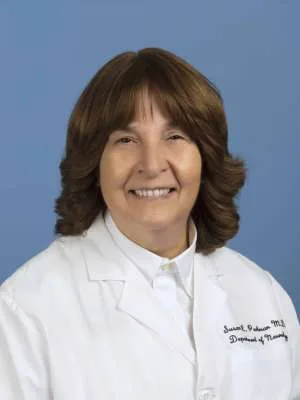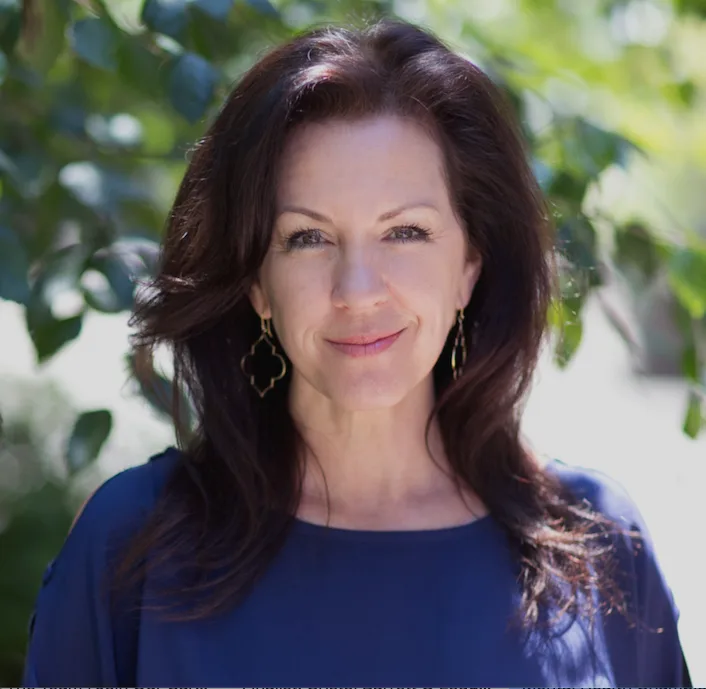Mitochondria Talks – Healthspan, Aging, & Neurodegenerative Disorders
On May 13, 2025, Blue Oak Nutraceuticals (BlueOakNx) hosted an event featuring eminent scientists on mitochondrial health and healthspan at the UCLA La Kretz Pavilion & Mathias Botanical Gardens. The event brought together leading researchers, clinicians, patients, advocates, and the general public to explore the critical role of mitochondria in aging, mitochondrial disease, and therapeutic interventions.
The timing was particularly significant as the company’s co-founder Dr. Sundeep Dugar and his team had just been selected as one of 40 semi-finalists in the $101 million XPRIZE Healthspan competition
The Mitochondrial Powerhouse - Dr. Susan Perlman

Dr. Susan Perlman, Professor of Neurology & Director of Ataxia and Neurogenetics Program and Post-polio Program at the David Geffen School of Medicine at UCLA.
She is also Primary Investigator for Friedreich’s Ataxia trials and sits on the Medical Advisory Board of the National Ataxia Foundation.
Dr. Perlman explained that mitochondria, often called the powerhouses of the cell, originated from ancient bacterial cells through endosymbiosis—a process where prokaryotic microbes developed symbiotic relationships with early eukaryotic cells
Key mitochondrial facts presented:
- Universal presence: Every cell except red blood cells contains mitochondria
- Maternal inheritance: All mitochondria come from the mother, making mitochondrial diseases maternally inherited
- Energy production: Convert food into ATP through oxidative phosphorylation
- Multifunctional roles: Beyond energy, they regulate calcium balance, immune function, programmed cell death, stem cell development, detoxification, and hormone signaling
Dr. Perlman emphasized that mitochondrial diseases are characteristically multi-systemic, affecting multiple organs simultaneously. This can lead to diagnostic challenges where patients see multiple specialists treating isolated symptoms without recognizing the underlying mitochondrial connection
Watch Dr. Susan Perlman’s talk on the BlueOakNx Youtube channel.
Neurodegenerative Diseases and Aging - Dr. Ming Guo

Dr. Ming Guo, is P. Gene & Elaine Smith Chair in Alzheimer’s Disease Research and Professor at UCLA Department of Neurology, Molecular and Medical Pharmacology.
Dr. Min specializes in memory disorders, neurodegenerative and neurogenetic disorders.
Her lab investigates molecular mechanisms of the two most common neurodegenerative disorders, Alzheimer’s and Parkinson’s disease.
Dr. Ming Guo presented compelling research on mitochondria’s role in neurodegenerative diseases and aging.
Her work focuses on two strategic approaches:
- Disease-Specific Research: Dr. Guo’s team discovered that mutations in PINK1 and Parkin genes, which cause recessive Parkinson’s disease, function together in controlling mitochondrial quality and integrity. Their research identified multiple molecular targets that can suppress Parkinson’s pathology in animal models by modulating mitochondrial dynamics—the balance between mitochondrial fusion and fission.
- Aging-Focused Approach: Recognizing that aging is the primary risk factor for neurodegenerative diseases, Dr. Guo’s laboratory works on selective elimination of damaged mitochondrial DNA. Their research shows that as we age, we accumulate mutated mitochondrial DNA, and when this crosses a threshold, it leads to cell dysfunction and death.
They’ve successfully developed tools to promote selective elimination of up to 95% of mutant mitochondrial DNA, representing a novel approach to combating cellular aging.
Watch Dr. Ming Guo’s talk on the BlueOakNx Youtube channel.
The Promise of Mitochondrial Research - Dr. Sundeep Dugar
Dr. Dugar, participating remotely from the XPRIZE Healthspan Award ceremony, presented 15 years of research on mitochondrial biogenesis and the investigation of the molecule epicatechin commonly found in cacao, green tea, fruits, and vegetables.
His presentation outlined the theoretical framework that mitochondrial dysfunction may underlie many chronic diseases and that supporting mitochondrial function could potentially support the body’s natural processes to heal itself. This has been termed as Salugenesis by Dr. Robert Naviaux of the Naviaux Lab at the University of California at San Diego.
Research Data
Dr. Dugar presented preliminary research data from investigational studies.
Diabetic Cardiomyopathy Research
A three-month investigational study with 100 mg daily epicatechin observed:
- Changes in muscle sarcomere structure and mitochondrial density markers
- Variations in electron transport chain protein expression
- Alterations in endothelial function and cellular bioenergetic markers
- Reported functional improvements in study participants
Beckers Muscular Dystrophy Research
Eight-week investigational study with 50 mg twice daily observed:
- Changes in mitochondrial transcription factors and proteins
- Variations in muscle regeneration biomarkers
- Observed changes in cardiac function parameters during exercise testing
- Self-reported improvements in balance, walking ability, and stair climbing
Watch Dr. Dugar’s video on the Role of Mitochondria in Beckers Muscular Dystrophy.
Research Safety Observations
A safety clinical trial of the investigational compound showed a favorable safety profile in research settings with no serious adverse events reported. Read the clinical safety trial paper.
Mechanistic Research
Dr. Dugar described ongoing research into a novel mitochondrial steroid observed to be produced during exercise. This steroid, which shows activity at femtomolar concentrations in laboratory studies, appears to share mechanistic pathways with epicatechin in preclinical models.
This research suggests potential molecular connections between exercise-induced mitochondrial changes and nutritional supplementation, though further research is needed to establish clinical relevance. NOTE: These findings are based on preliminary research and have not been evaluated by regulatory authorities.
Watch Dr. Dugar’s video on his discovery: Let’s Talk Mitochondria & the Discovery & Role of a New Steroid
Emotional Support for Rare Disease Families - Cristol Barrett O’Loughlin

Cristol Barrett O’Loughlin is the Founder and CEO of Raregivers Global, and the Creator of the Raregivers™ Coalition
Raregivers Inc is a global network providing mental health and wellness services to caregivers, patients and professionals in rare, chronic and complex disease communities.
The organization supports over 21,000 rare families across 33 countries, with a goal to connect and educate 3.5 million Raregivers™ by 2026.
Cristol Barrett O’Loughlin brought a crucial perspective often overlooked in scientific discussions—the emotional toll on families dealing with rare and chronic diseases. As someone who lost three brothers to Hunter syndrome and later survived breast cancer, she founded Raregivers Global to address what she calls a “global mental health crisis.”
Raregivers Emotional Journey Map
Based on 287 pieces of published research and input from 21 cohorts, this tool maps the non-linear emotional journey families experience, including:
- Diagnostic uncertainty (averaging 7-8 years for accurate diagnosis)
- Cycles of hope and grief
- Social isolation and career disruption
- Financial hardship and system navigation challenges
Global Impact
Raregivers Global has translated their support tools into 12 languages, with AI enabling expansion to 400 languages. Their goal is to emotionally support 3.5 million rare givers by 2026—representing just 1% of the estimated global need.
Watch Ms. O’Loughlin’s video on the BlueOakNx Youtube channel.
Future Directions for Mitochondrial Research
The event highlighted several critical insights:
- Mitochondrial Research Focus: Mitochondrial dysfunction appears to be associated with aging and numerous diseases in research studies, making it an area of active scientific investigation.
- Multi-Modal Research Approach: Comprehensive approaches may need to address both biological mechanisms (through research into interventions like MitoCatalyst) and psychosocial impacts (through support systems like Raregivers Global).
- Research Acceleration: With 97 active clinical trials investigating mitochondrial diseases and growing research into aging mechanisms, the field is rapidly advancing.
- Personalized Research: Future research directions may investigate combinations of genetic testing, biomarker monitoring, and targeted interventions based on individual mitochondrial profiles.
- Research vs. Treatment: Scientific emphasis is investigating approaches to support mitochondrial health throughout life, though clinical applications require further validation.
The BlueOakNx event successfully demonstrated the convergence of rigorous scientific research with compassionate community advocacy. By bringing together researchers like Drs. Perlman and Guo with innovators like Dr. Dugar and advocates like Crystal Barrett O’Loughlin, the symposium illustrated how addressing mitochondrial health requires both scientific breakthroughs and holistic support systems.
The timing of the event, coinciding with Dr. Dugar’s XPRIZE recognition, underscores the growing scientific interest in healthspan—not just lifespan—as an area of research focus. As research continues to investigate the role of mitochondria in aging and disease, events like this provide crucial forums for discussing how scientific discoveries might potentially translate into research applications.
The enthusiasm and expertise demonstrated by all speakers, combined with the personal stories of perseverance, painted a picture of a field actively pursuing significant research advances. For families dealing with mitochondrial diseases and age-related decline, this research represents hope for better understanding the underlying cellular mechanisms, though clinical applications require further validation through rigorous scientific investigation

Important Disclaimer: The research presented represents investigational findings and preliminary data. No claims are made regarding the diagnosis, treatment, cure, or prevention of any disease. Individuals should consult with healthcare professionals before making any health-related decisions. These statements have not been evaluated by the US FDA.



